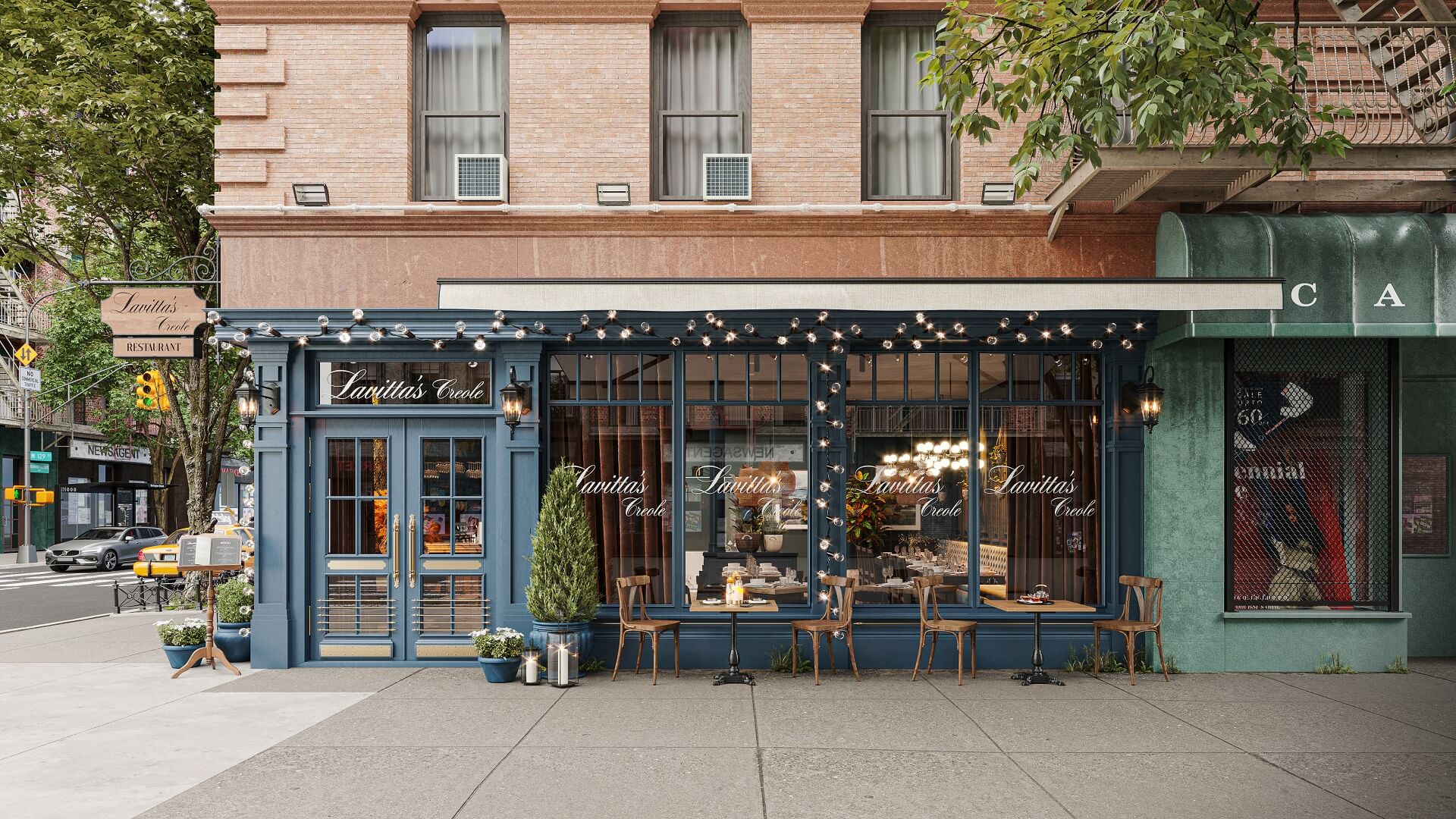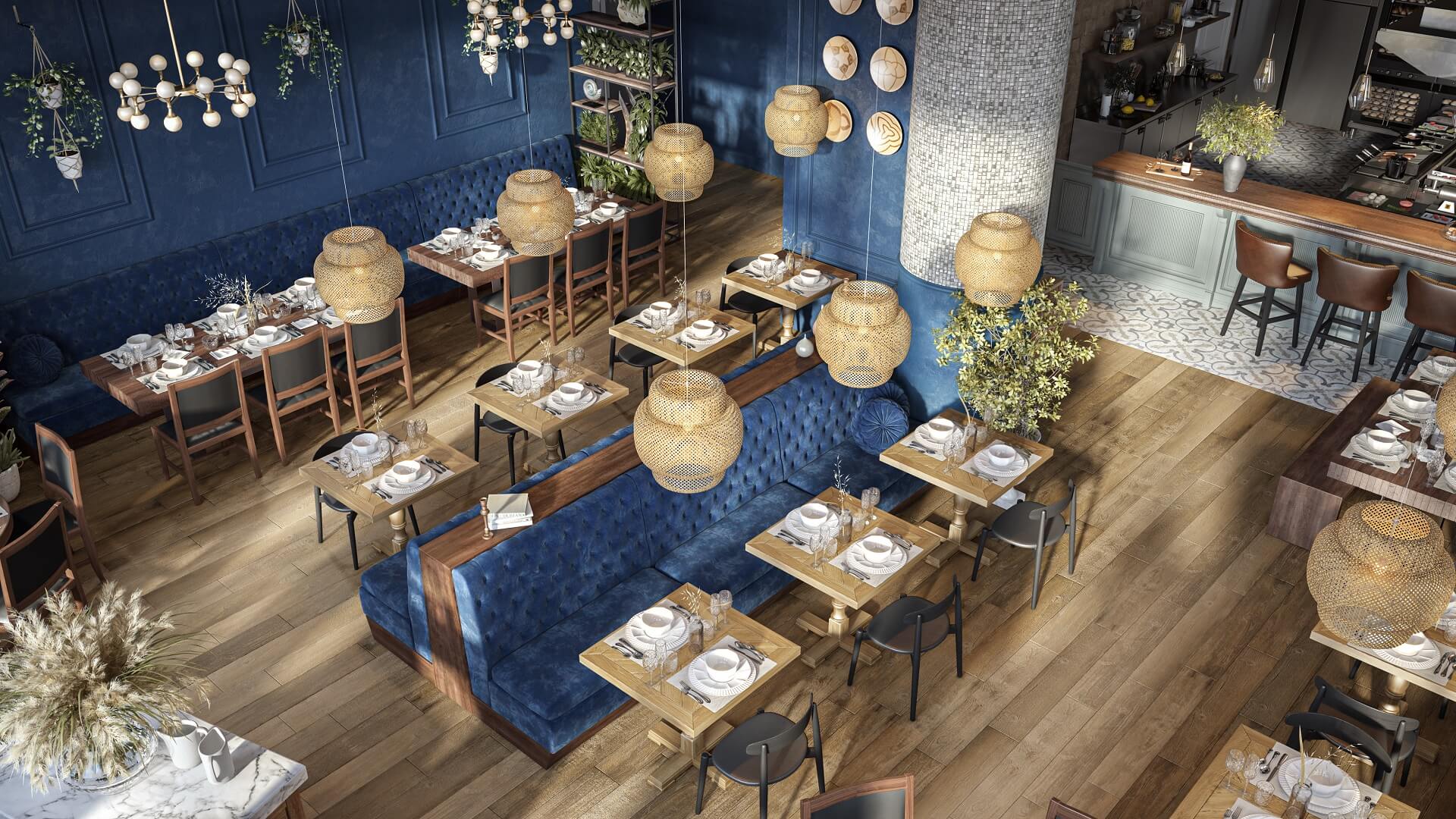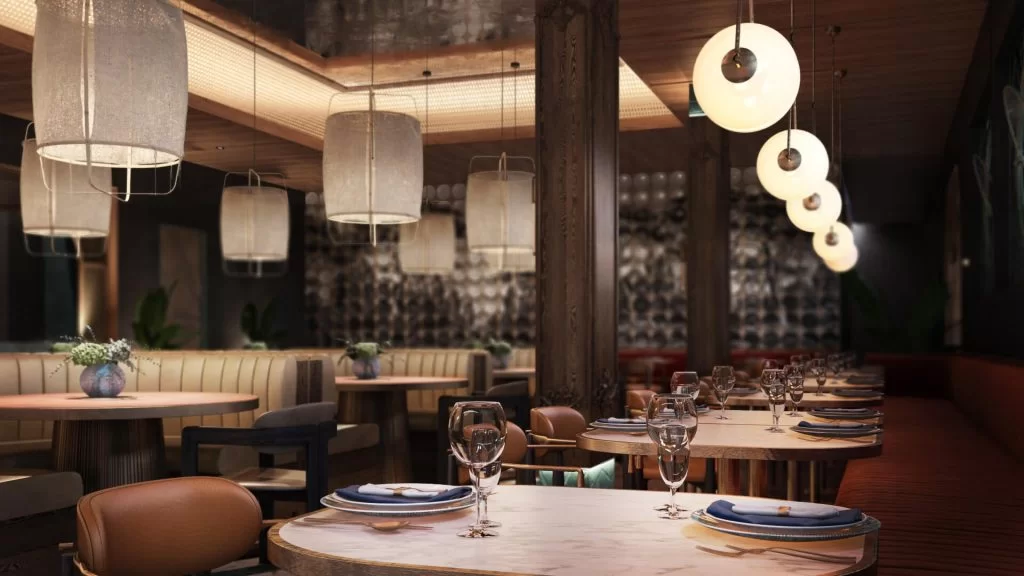Hospitality designs, such as restaurants and hotels, demand an exceptionally meticulous and impactful presentation. This is because clients and investors in these kinds of projects are very discerning and not easily impressed. So it is crucial to convey all aspects of the design, from functionality to layout to atmosphere. CGI can significantly enhance the presentation of such projects. To amplify the impact, designers should find the 3D visualization solutions that will suit their goals best. So, what types of hospitality design 3D rendering to consider?
Our 3D visualization studio creates various CG visuals for all kinds of hospitality projects. We know exactly how 3D renders can boost the effectiveness of your presentation. Let’s get into the types of CGI that might come in handy for presenting hospitality architecture design!
#1. Exterior 3D Rendering

Exterior rendering serves as the visual gateway to hospitality projects. It provides a comprehensive view of both the functionality and aesthetics of the architectural design. First and foremost, this type of rendering allows designers to showcase the facade. However, the usage of exterior CGI is not necessarily limited to a static frontal shot. One can use multiple perspectives, for example, eye-level side angles, bird’s eye views, etc. These can help stakeholders appreciate the project’s scale, design intricacies, and its relationships with the surroundings. Whether the building stands out or tastefully blends in, a well-made exterior rendering can convey it.
#2. Interior 3D Rendering

This type of hospitality design 3D rendering allows the viewers to take a sneak peek inside the very heart of the project. It helps them examine all the details of the designed spaces. Whether a designer wants to showcase cozy suites, inviting lobbies, posh restaurants, atmospheric bars, or other essential areas, interior rendering comes in handy. A well-thought-out 3D render can convey the layout, style, and atmosphere of a place.
#3. Amenities 3D Rendering

For hospitality projects especially, amenities play a crucial role. Therefore, it’s essential to showcase them in their full splendor. Renderings focusing on pools, bars, gyms, etc., can provide a detailed look at these facilities and the comfort they offer. This way, amenities renderings contribute to the project’s overall appeal for stakeholders.
#4. Close-Up Views

Close-up renders focus mostly on the interior and more rarely on exterior elements. In any case, they show textures and fine details. Such renderings are great for emphasizing specific design elements. This way, they highlight the uniqueness of the presented hospitality concept.
A close-up hospitality design 3D rendering is also crucial for conveying the atmosphere of the space. With a render like that, it’s almost like a viewer can touch and feel the surfaces and objects even before the depicted place actually exists.
#5. CG Animation
Animation can bring to life any hospitality design concept. This CG tool can be used in various ways. For example, it can show the transition between daytime and nighttime to give a full understanding of a hotel or cafe’s exterior lighting. Or, the camera can glide over fancy tableware and decor items on restaurant tables, conveying the mood of the place. It’s also possible to enchant the viewer with the gentle movement of water in the pool and the leaves of the trees in the garden of a future resort. With smooth transitions, visual effects, music, and voiceovers, the possibilities to create a dynamic and engaging 3D video presentation are endless.
#6. Virtual 3D Tours
This is one of the most cutting-edge approaches to hospitality design 3D rendering. Virtual tours allow viewers to explore every nook and cranny of space in an interactive way. Using a mouse or touchpad, stakeholders and potential clients can ‘walk’ through the future place almost like in real life. They can change the viewing angle and zoom in and out. This allows them to uniquely and firsthand experience the ambiance and understand the design.
#7. Immersive 3D Tours
Immersive tours, powered by Unreal Engine and Pixel streaming, take hospitality design 3D rendering to the next level. With such an asset, viewers can examine amenities, explore various rooms, and even manipulate weather and time of day as well as tweak the interior design solutions. Being on top of the list of innovative types of 3D rendering, immersive tours provide an unprecedented level of detail and customization. Now, stakeholders are not only passive viewers. They can interact with what they see and revise it in real-time.
Want to learn how much your project costs? See how we evaluate 3D rendering projects
When it comes to hospitality design, the use of diverse 3D rendering techniques ensures that every project aspect is presented impeccably. Embracing CGI technologies allows designers to communicate their vision best and elevate design presentations. This enables them to close hospitality deals more quickly and on better terms by making a genuine impression on stakeholders during pitches.
Want to see how CGI can enhance your hospitality project’s success? Contact us to get professional 3D rendering services that will bring your presentation to new heights!

Stacey Mur
Content Writer, Copywriter
Stacey is a content writer and a CG artist. Outside of work, Stacey enjoys musicals, Star Wars, and art talk. A proud Corgi parent.


